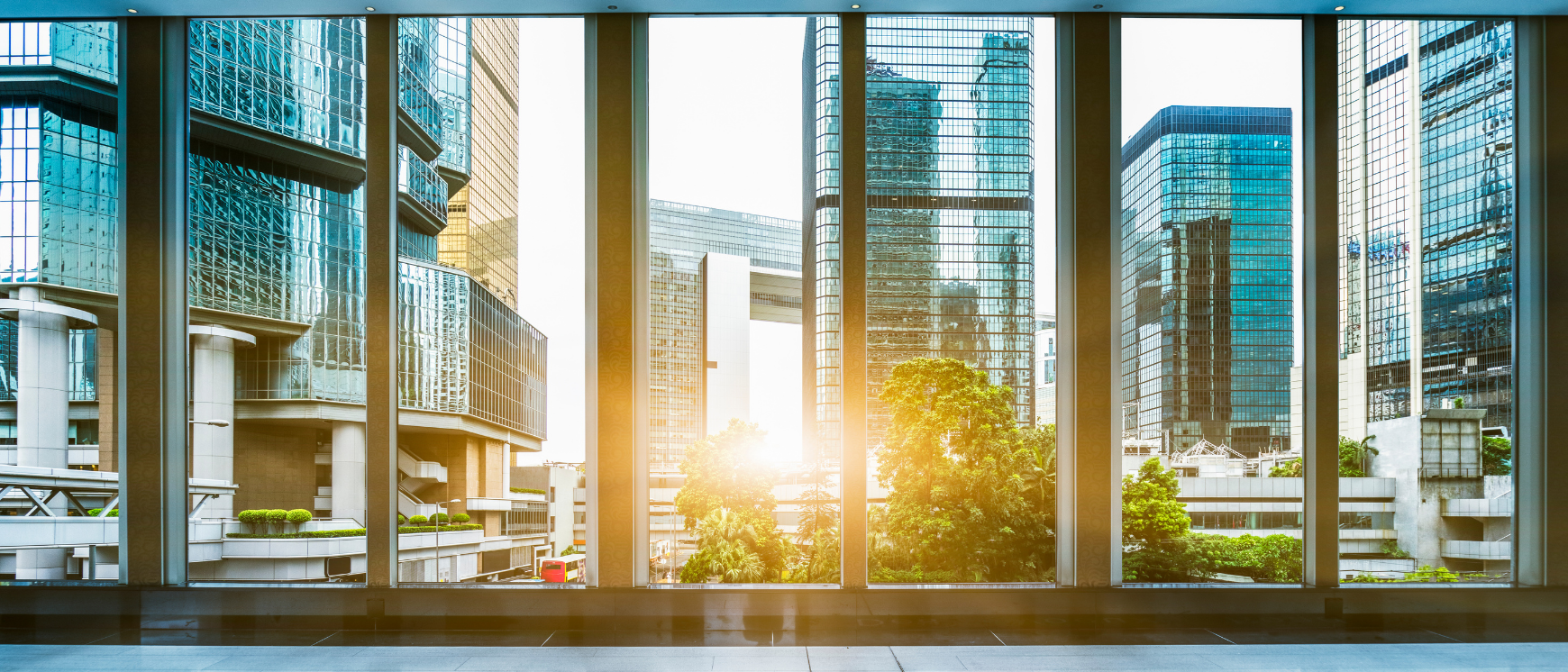We all want to do our part in creating a bright and sustainable future. This means developing short and long-term strategies that meet our present needs, without compromising the health of the planet for generations to come.
With buildings accounting for almost 30% of annual CO2 emissions across the globe1, sustainability is a hot topic in the building sector and construction industry. The globally recognized green building certification system LEED (Leadership in Energy and Environmental Design) is paving the way in this exciting time of transformation, helping everyone from architects to office managers navigate the waters of an environmentally friendly world.
Want to propel your business into the future? Read on to discover how LEED certification can help you unlock business potential – and how Tork can be a helpful partner in achieving accreditation.
What is LEED?

When it comes to creating healthy buildings, LEED is the most widely used green building rating system in the world. Developed by the United States Green Building Council (USGBC), this globally recognized framework ensures that buildings are designed and built for a better future. The framework sets sustainability standards that seek to improve on energy savings, water efficiency, indoor environmental quality, and the reduction of CO2 emissions.
LEED certification is available for all building types, regardless of their life cycle. Whatever country you call home, having a LEED certification plaque on your building is the ultimate symbol of sustainability achievement, and something to be truly proud of. Since its inception in 1998, LEED has expanded at an exponential pace, and the framework will become indispensable as we work towards a world where smart and sustainable buildings are the rule rather than the exception.
There is much value in LEED certification for people and businesses. Buildings significantly impact human health, as we spend around 90% of our time inside them2. LEED-certified buildings have better indoor air quality, improved access to daylight and protection from harmful chemicals. The result is a much healthier experience for the people who spend time inside these buildings.
LEED accredited office environments report better recruitment and employee retention rates, and an increase in output and wellbeing. According to a recent USGBC survey, 85% of employees in LEED-certified buildings say their access to quality outdoor views and natural sunlight boost their overall productivity and happiness, and 80% state-enhanced air quality improves their physical health and comfort3.
With 127,973 projects currently active across 180 countries, LEED is helping office building professionals across the globe achieve important sustainability goals. Notable locations such as Istanbul Airport and The Center for Sustainable Landscapes (CSL) at the Phipps Conservatory and Botanical Gardens in Pennsylvania are some best-in-class examples of LEED-certified buildings.
The benefits of LEED certification

There are many benefits to complying with LEED standards. One of the most important figures to consider is that LEED certified buildings generate a 34% lower carbon footprint on average4. Not only is it ethical to meet global standards of environmental sustainability, it is also economical and promotes a stronger business model.
In terms of cost savings, buildings that boast the LEED mark of excellence consume on average 25% less energy and 11% less water5. Another benefit is lower overall cost of health insurance for employees due to less sick visits.
Overall, LEED certification enables an organization to attract employees, shareholders and customers who share common values and are committed to a prosperous future. LEED accreditation can therefore positively impact your business reputation, image and expenses.
How Tork products can help you earn extra credits to achieve LEED certification
To earn LEED certification, a building must demonstrate compliance with all mandatory prerequisites, plus a select number of optional credits. Points are earned across several categories including energy usage and indoor air quality. A project then earns one of four LEED rating levels: Certified, Silver, Gold or Platinum.
Here at Tork, a strong sustainability strategy is a core part of our business. Our extensive range of innovative hygiene solutions and third-party certified products can help projects and buildings earn extra credits to achieve LEED certification. Tork offers a range of high-capacity hygiene products designed to help you meet stringent standards while supporting high productivity and efficiency.
If you are looking for products that can help meet healthy building and green cleaning standards, our offering can help you achieve LEED credits. For example, by switching to our certified tissue products you can earn up to two LEED credits for the Green Cleaning and Environmentally Preferable Purchasing category. You can also potentially earn up to five test pilot credits for the Innovation category implementing Tork Vision Cleaning or installing Tork PeakServe®. Some of these types of changes are relatively low cost and could help your project jump to the next level of green building transformation.
Now that you know how LEED certification can propel your business into the future, why not learn more how Tork products and services can help your facility earn LEED credits?
Sources
1 US Green Building Council: Why LEED
2 US Green Building Council: Why LEED
3 US Green Building Council: Benefits of green building
4 US Green Building Council: Why LEED
5 Canada Green Building Council: LEED: the international mark of excellence
